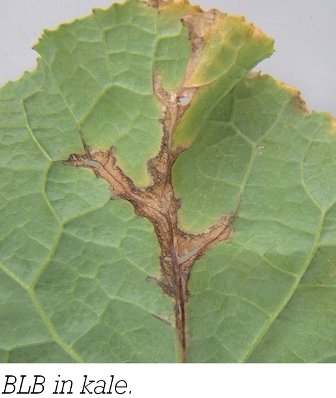Bacterial leaf blight (BLB)
The two common bacterial leaf diseases in brassicas are bacterial leaf blight and Xanathamonas leaf blight (BLB). Both affect a range of crops and have a similar biology.
Identification
BLB is typically seen as light brown-black spots with narrow to wide yellow halos. Pathogens often spread down leaf veins giving them a characteristic black appearance. Infected leaves become yellow and die prematurely. Symptoms are sometimes confused with downy mildew.

Importance
Damage to leaves can be severe and result in reduced feed quality and quantity.
Spread
BLB survives on weeds and crop debris in the soil. Warm, wet and windy conditions assist the dispersion of spores, which enter the host tissue through wounds or natural openings. Infected seed can also spread BLB into new areas or crops.
Prevention and management
Sowing clean seed minimises infection, along with a three year rotation following an outbreak of the disease. Careful weed control is also recommended, as is keeping pest populations in check to minimise damage that can become a portal for infection.

